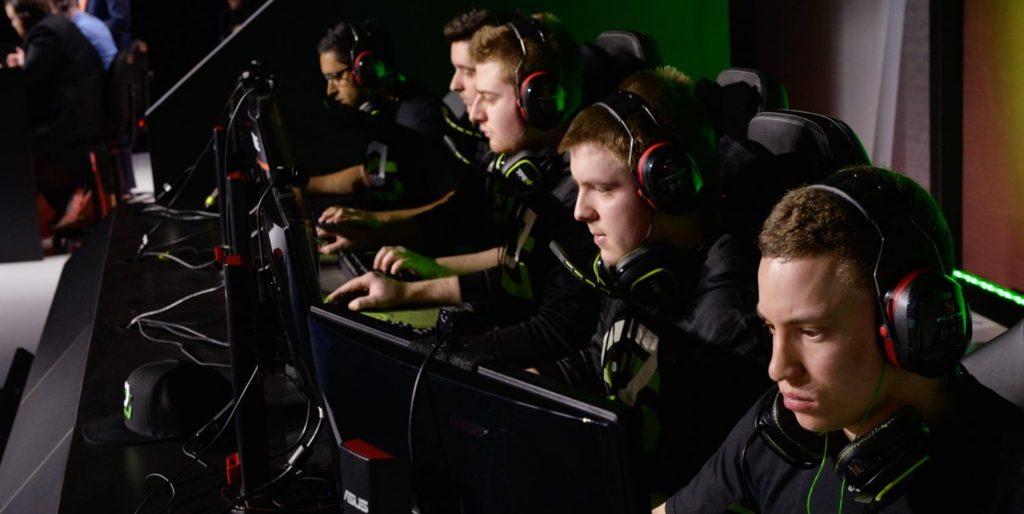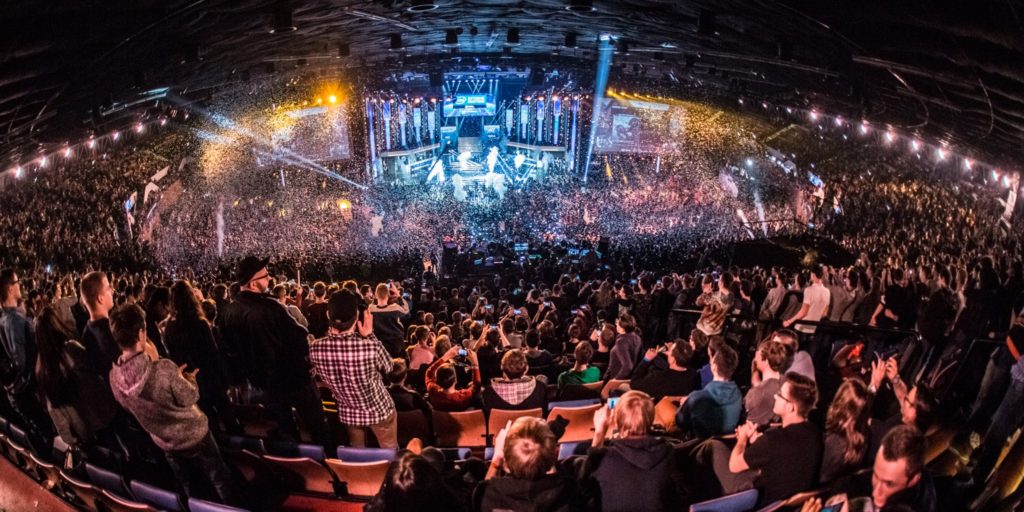This article is part of a collaboration with iQ by Intel.
Broadcasting esports on TV is the latest craze, but the internet-born phenomenon may have already hit its stride live-streaming. Four decades after the first videogame competition, esports finally hit primetime television on May 27 with TBS’s ELeague. Interest in esports is skyrocketing around the world, but the question remains whether the excitement of videogame matchups, which thrill millions of fans via livestreaming on internet sites like Twitch and YouTube, will succeed on a cable television network. “Everybody is waiting with baited breath to see how ELeague is received,” said Matt Hill, senior vice president of Global Sports and Entertainment at GMR Marketing. Gaming tournaments have come a long way from their humble beginnings: Folklore has it that Stanford University students participated in the first esport, the “Intergalactic Spacewar Olympics” in October 1972. Grand prize winners got a year’s subscription to Rolling Stone magazine.

Today, the world’s longest running esports tournament Intel Extreme Masters (IEM) attracts gamers compete for a prize pool of $1 million. The 2015 event in Katowice, Poland attracted 100,000 people and set an IEM record of one million concurrent viewers on Twitch. Enthusiasts and occasional viewers composed a huge audience even before a network put esports on TV. According to research firm Newzoo, audiences are expected to climb from 256 million in 2016 to more than 345 million by 2019. According to Hill, TBS could play a major role in that growth, especially by attracting new audiences to professional esports. The transition from streaming to live broadcasts presents unique challenges for the emerging sport but also massive opportunities.A lot more is riding on the first two seasons of ELeague (airing throughout the summer and featuring popular shooter Counter-Strike: Global Offensive) than the $1.2 million in prize money, said Hill. “The biggest benefit is from a perception standpoint,” he said. “[Being on television means] esports are no longer thought of as an underground industry.”
The live-streaming video platform Twitch draws in a staggering 8.5 million active users a day, and esports account for an equitable share of the viewership. With those numbers, many would argue that the digital sport has already reached the “mainstream,” whether it’s shown on TV or not. “At a time when the majority of traditional sports are trying to figure out how to solve the digital puzzle, you have esports, which have been born out of the digital space, now trying to go backwards into TV,” said Hill. But a successful run on the national stage could convince big (and still apprehensive) advertisers to enter the fray. And getting more major brands behind esports appears the next logical step to turning competitive gaming into a national pastime. For these potential advertisers, ELeague is more than just a broadcast. It’s the final testing ground.
The Twitch Takeover
ELeague is testing the waters with a 10-week gaming tournament that airs every Friday. The tournament includes 24 teams, all of which have won a Counter-Strike: Global Offensive tournament in the past year, playing the popular first-person shooter on air. Hopes are high that the tournament will flourish in its prime Friday night slot, but the esports community has its share of reservations about the limelight. Chiefly, TV may not be the right fit for a sport primarily consumed on the internet. “TV is a very structured medium—the ads, the right kind of commentators, the timing—it relies on consistency and repeatable structures,” said Gareth Martin, formerly a channel manager at the videogame-centric TV network Ginx.TV. To his point, a sport like professional basketball, with its clockwork regularity of quarters and halftime analyses, easily adapted to the television format. An esport match, on the other hand, can go on almost indefinitely or be over in the blink of an eye.

For some, Twitch seems like the best method for consuming headshots, knock outs, and pentakills (when players take down an opponent’s entire team). “Twitch was really born out of a true passion for esports,” said Andy Swanson, the VP of esports at Twitch. “Most people discovered and experienced esports on Twitch and continue to come back on a daily basis.” Twitch grew up alongside esports, rendering it a platform custom-tailored for the competitive gaming experience in many ways. For one thing, it eliminates barriers to entry for fans and pros alike. Regardless of skill level, players from all over the world can easily and instantly broadcast their matches and scrimmages. “The fact that Twitch focuses on the live experience and provides the opportunity for fans to interact with one another makes it the perfect platform,” Swanson said.
Much like Facebook or Instagram, the Twitch interface also naturally fosters a sense of community. Fans can keep up with their favorite players and teams simply by subscribing to their channels. The chat window even allows them direct communication with players, other fans and rival camps. These internet-tailored features heighten not only the communal aspect, but the drama that remains so crucial to enjoying esports. Chats overflowing with fan reactions to “oh my god” moments is something TV struggles to replicate.
TV Strikes Back
But even with the disadvantages, esports may still have a place on broadcast TV. Traditional television cannot match the immediacy and adaptability of the internet, but the way people watch TV is evolving into a much more internet-enabled experience. According to the research of Professor Matthew Eastin of University of Texas at Austin, sports fans now use second devices such as tablets and phones to enhancement their engagement with televised sports. “People are able to immerse themselves in a franchise beyond being a fan who sits on the couch and says ‘Go team!’” he explained. “They are out there contributing to the community of the team itself.” Passive sports viewing is out, and multi-platform sports apps are in. The rising popularity of Major League Baseball’s At Bat, for instance, brings an array of information (box scores, pitch data, player stats) to a fan’s fingertips. Secondary devices could supplant the connectivity the esports audiences craves. Comparable to MLB’s At Bat, Turner Broadcasting Network already hinted at providing similar features for ELeague through Bleacher Report’s Team Stream, another second-screen sports app. In the end, esports may not need TV to go mainstream. Like the networks and advertisers who are eagerly waiting to assess ELeague’s success, everyone will have to wait and see.
